Hanging with Aang: The Miyazaki-esque Mythology of Avatar: The Last Airbender
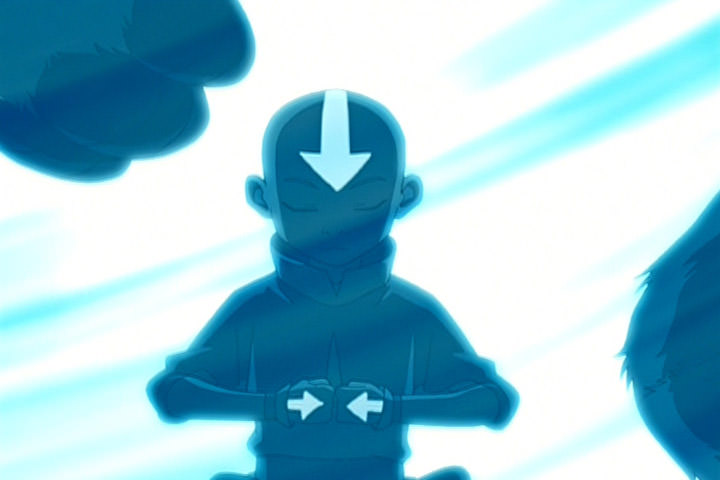
Note: This article contains spoilers. Proceed at your own risk.
I began exploring Hayao Miyazaki’s films long before any of them had been released on DVD. And given that I was living in Lincoln, Nebraska, the chances of any of them ever making it to a local movie theatre were slim to none. (Princess Mononoke arriving at The Ross was a supreme cause for celebration.) In order to watch the few Miyazaki films that were readily available — e.g., My Neighbor Totoro – I had to spend some time in the children’s section of my local video store — and I’m sure it looked odd to see a man in his late twenties wandering through the aisles of Pokémon and Power Rangers videos. It certainly felt that way.
I feel somewhat similarly when I talk about Avatar: The Last Airbender. Here I am, a man in his mid-thirties, singing the praises of a Nickelodeon series aimed squarely at 6 to 11-year-olds. But good, worthwhile, and honorable culture can be in all places. So let me cut right to the chase: I was very impressed by this series.
The term “Miyazaki-esque” doesn’t at all feel like an overstatement, here. While the series didn’t necessarily conjure up within me the same sense of awe and wonder that I attribute to Miyazaki’s works, it aims for and achieves similar levels of myth-making, world-building, character depth, and moral complexity.
Sky Bisons, Platypus Bears, and Gorilla Goats, Oh My!
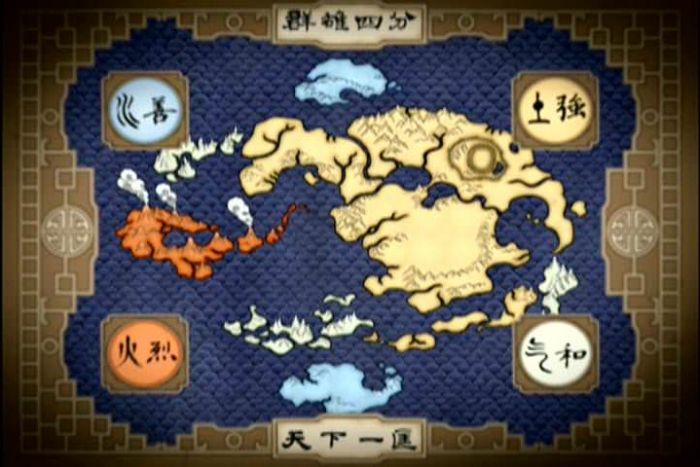
I’m always a sucker for a title with a good mythology to it, and if nothing else, Avatar: The Last Airbender has that going for it. Drawn together from fragments of Eastern religions, philosophy, and martial arts, the world of Avatar: The Last Airbender is quite layered and complex.
The series’ world consists of four nations, each one associated with a particular element (water, earth, fire, air) and each one with its own unique and elaborately detailed culture, traditions, politics, economics, and even flora and fauna. Within each nation are “benders”, those who are capable of controlling a nation’s signature element. The role of benders is largely influenced by the nation’s society: the Water Tribes see waterbending primarily as tool for healing and growth whereas the Fire Nation uses firebending for military and industrial purposes. Above all benders is the Avatar, who is reincarnated into each generation and tasked with maintaining balance in the world by mastering all four elements.
The four nations lived in peace with each other until one hundred years before the series’ start, when the Fire Nation declared war on the others and began a campaign of genocide and conquest. This is where the Avatar should have stepped in and restored balance and peace. However, the incarnation of the Avatar was a twelve-year-old boy named Aang who, fearful of his destiny and responsibilities, ran away only to crash in the ocean and become frozen in ice for a century.
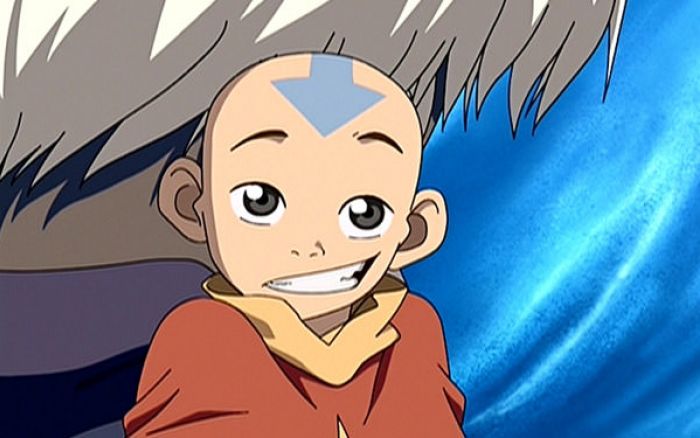
He’s eventually reawakened by a young waterbender named Katara and her brother, Sokka, and learns that his nation — the Air — have been wiped out by the Fire Nation during his absence, and that the Fire Nation is close to conquering the entire world. Overcome with guilt, Aang decides to face his destiny, and accompanied by his new friends, sets out to master the elements and bring peace to the world.
That description really only scratches the surface. Over the course the three seasons, the series creates an elaborate mythology for the Avatars, Aang’s history, and the rest of the world. And Avatar: The Last Airbender does so in one of my favorite ways, by taking aspects of the real world — Eastern philosophy, kung fu, architecture, clothing — and putting just enough of a different spin together that the resulting mash-up is not only cohesive and believable within the context of the series but also imbued with a certain nostalgia (for lack of a better term) because of its familiar-ness. This applies to everything from the array of architectural styles on display in the series to the fantastical creatures (like Aang’s flying sky bison, Appa).
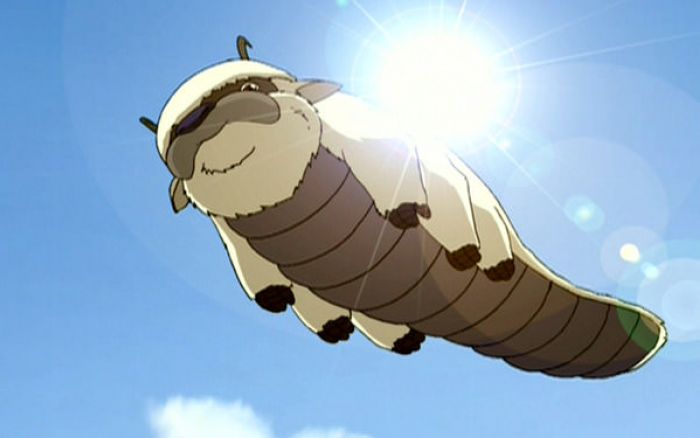
It’s not all that dissimilar to what Miyazaki did in Castle In The Sky, which is as influenced by Western technology as Avatar: The Last Airbender is influenced by Eastern ideology.
I can imagine some folks (e.g., Christians) being a little leery of the series because of the Eastern influences (e.g., Buddhism, Taoism, Shintoism), not to mention all of the talk about reincarnation, spirit worlds, and such. While I understand their concerns, and certainly agree that parents — Christian or otherwise — ought to exercise their own discretion when deciding whether or not to let their kids watch this or any series, I personally found the inclusion of such elements about as pernicious as, say, Miyazaki’s usage of Shintoism and animism in such films as Princess Mononoke and Spirited Away.
That is to say, the series never stoops to proselytizing. Rather, the Eastern concepts in the series are simply “there”, coloring and lending cohesiveness and consistency to its mythology. Or to put it another way, I’d never describe the series as an outreach tool for Buddhism; this is, by no means, some sort of animated Jack Chick tract. What’s more, there’s much in the series for Christians to agree with and even praise. A great deal of emphasis is placed on the need for grace and forgiveness, the effects of violence and the costly nature of seeking to understand and love one’s enemies are never shied away from, and the series displays a surprisingly nuanced view of humanity’s capacity for both good and evil.
Of Scarred Princes and Absent Fathers
It’d be one thing if Avatar: The Last Airbender simply created a fascinating world for its characters to explore. However, the series goes one step further: it populates the fascinating world with characters that are even more fascinating. And in doing so, it displays a mature and nuanced understanding of human nature, one that is all the more remarkable given its nature as a “children’s” show.
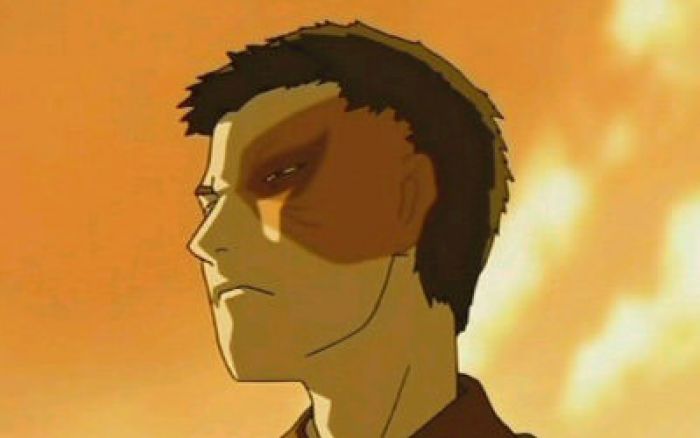
The series “teaches” time and again that people are not purely evil, nor are they purely good. Rather, they have a great capacity for both, and a person oftentimes moves from one to the other in surprising, confusing, and sometimes maddening ways. The series makes it abundantly clear that villains are not diabolical and irredeemable, nor are heroes infallible. They both contain the same flaws, and the same potential for glory.
This can best be seen with the character of Prince Zuko, a young man twisted with rage and ambition who is introduced as the series’ villain. At first, there’s little to recommend about his character. However, he’s slowly revealed as arguably the series’ most complex and conflicted character. Abused and brutally scarred by his father, the ruler of the Fire Nation, stripped of his honor, and banished and sent on a fool’s errand to find the Avatar, Zuko is full of shame and rage even as he yearns to restore his honor and reclaim his position — and regain his father’s approval.
The series’ handling of Zuko is commendable because he doesn’t remain static, nor does he ever become a caricature. His transformation over the course of the series is fascinating, not only because of the sheer amount of transformation that occurs, but also because of the path he travels, one that is full of failures and triumphs. As such, when his true nature emerges, it’s entirely believable and all the more rewarding.
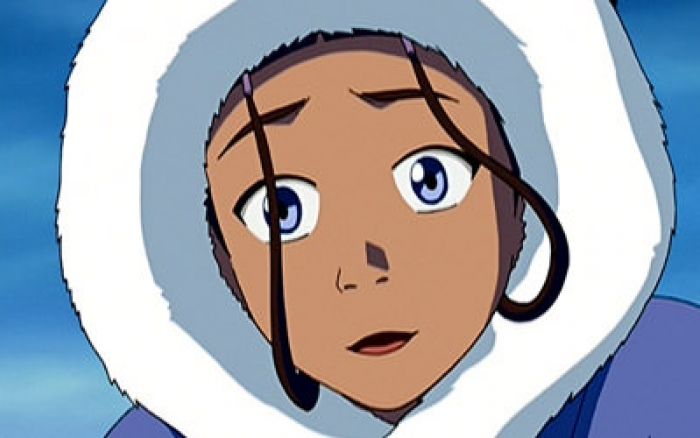
Conversely, the series’ heroes are just as flawed. In one thought-provoking episode, Katara — the series’ most idealistic character — goes after the man she believes to be responsible for her mother’s death. She steadfastly refuses to listen to Aang and others who encourage her to forgive him and not give into bitterness. Rather, she chooses to go down a darker path that reveals years of repressed pain and hurt, and makes her idealism all the more poignant.
Aang, who is obviously the series’ main hero, may not be quite as interesting as some of the other characters (e.g., Zuko), but he certainly has his moments. In the series, he’s only twelve years old (or 112, if you count his time frozen in ice), and he acts like a twelve-year-old, which means that he’s at times mischievous and even something of a spoiled brat — and he’s not above the occasional bit of potty humor. At the same time, it’s hard not to be won over by his mischief, which he often uses to beat his foes without having to shed any blood. (Aang’s pacifism — and vegetarianism — are pronounced throughout the series, and their implications are thoroughly explored.)
I could go into detail about all of the major characters, as well as a good number of the minor characters — they all have detailed histories and nuanced personalities that evolve over the course of the series’ 61 episodes. Some characters end up in better places, some in worse, but their journeys are, by turns, fascinating, exciting, and heartbreaking.
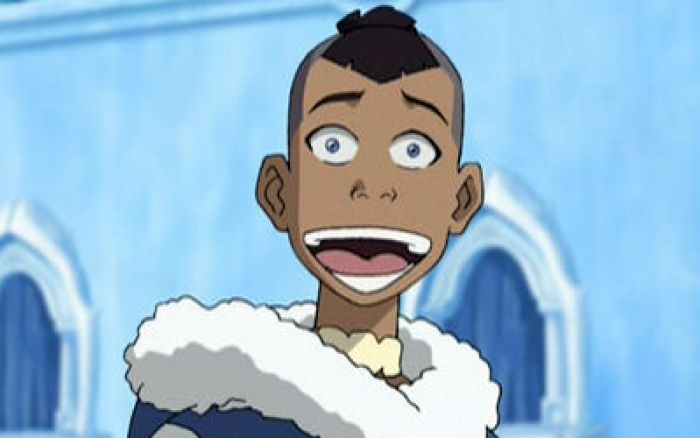
Furthermore, the series never lets you forget the stakes that are involved. While not a bloody title by any means, death and suffering are not shied away from either — be it in the form of Zuko’s scar, the Fire Nation’s oppression, or the fact that nearly all of the main characters are, in some way, dealing with the loss of fathers, mothers, and other loved ones. In one especially poignant episode, Katara bonds with an earthbender named Haru because they’ve both lost their fathers. The scene where they comfort each other is a short one, composed mostly of silence, but it is one of the series’ most affecting scenes, and it’s made all the moreso by its restraint in acknowledging the characters’ loss and loneliness.
However, lest I give you the impression that the series is all serious themes and moral dilemmas, the series is also a lot of fun. Sure, some of the humor is aimed squarely at 8-year-olds in the audience — like Sokka’s goofiness and the aforementioned potty humor — but even adults will find themselves charmed by it. The series is also quite thrilling, taking its martial arts inspirations — the various elemental bending forms are patterned after actual martial arts forms, such as Northern Shaolin kung fu and Tai Chi Chuan — and offering up some truly exciting action sequences, big and small. For example, I still go back to the episode where Aang and his friends take down a Fire Nation device attempting to penetrate the walls of an Earth Kingdom city, simply because it’s one of the best action set pieces I’ve seen in a long time.
So, what about the movie?
As you may have heard, M. Night Shyamalan has a new movie coming out this summer entitled The Last Airbender that is based on the series’ first season. However, while I’m interested in the film because of my appreciation for the original series, I have to admit that I’m not too excited about Shyamalan’s adaptation, for two reasons.
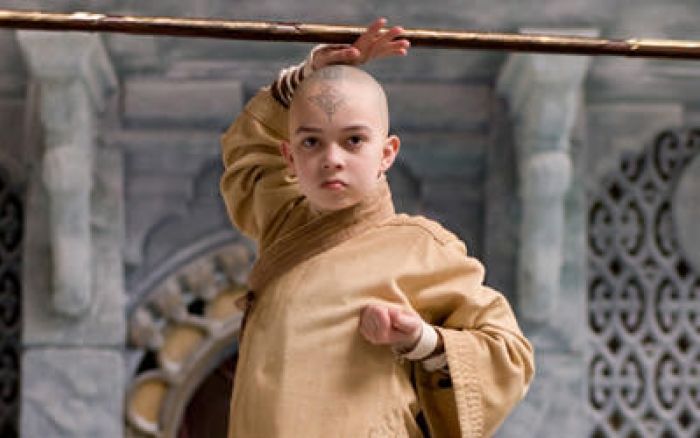
First, I’m a little concerned about the “white-washing” in the movie. In other words, the series is heavily influenced by Asian culture, philosophy, religion, and so on. However, as many have pointed out, the cast is predominantly Caucasion, not Asian.
Now, this doesn’t automatically mean that the movie won’t be any good, nor am I accusing the filmmakers of blatant racism (read Shyamalan’s response to the accusations of racism, may contain spoilers). You cast the best actors for the roles that you can, and while I’ve no reason to believe that the white actors who have been cast won’t do a solid job, I also find it hard to believe that the filmmakers couldn’t find young talented Asian actors for the roles. Furthermore, given the obvious influence of Asian culture on the series — an influence that seems to have carried over to the movie’s overall look, based on the trailers and stills that I’ve seen — it seems odd to imagine seeing a bunch of white actors dressed up in Asian-influenced clothing wandering through an Asian-influenced world. There will, undoubtedly, be a disconnect for many fans of the original series.
However, that’s not my primary concern about the film. My primary concern is one that’s more fundamental than the color of an actor’s skin. Rather, it’s that Shyamalan has made unnecessary changes to the tone and atmosphere of the story. In this io9 article, Shyamalan talks about his adaptation process:
But the director did have to whittle some things away. While taking a break from filming in the dusty floors of the North Air Temple Night told us what had to be cut: “I took away a little bit of the slapsticky stuff that was there for the little little kids, the fart jokes and things like that. We weeded that stuff away and the other stuff came out. We grounded [Sokka], who’s the comic relief in the show. We grounded him, and that really did wonderful things for the whole theme of the movie.”
Whenever I hear that someone is “grounding” a film, it throws up the same red flag as when I hear someone saying they’re going to make a movie “grittier” or “more realistic” than the source material (which is why I have no desire to see films like Troy, King Arthur, and Robin Hood).
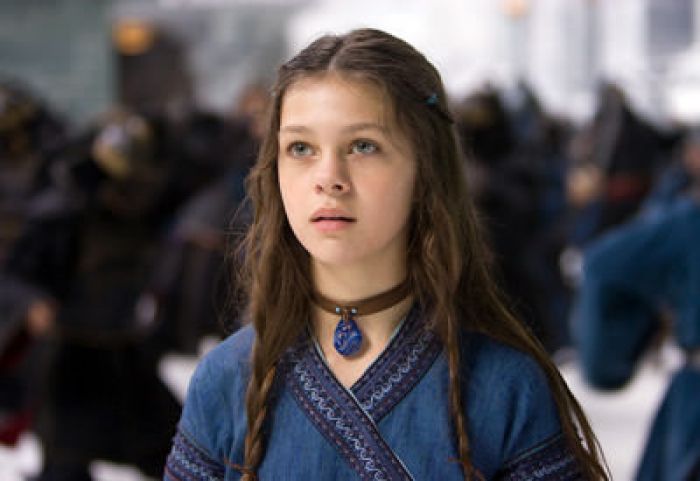
As I mentioned before, the series’ main character, Aang, is actually a twelve-year-old boy, and that he acts like, well, a twelve-year-old boy (with all of the attendant fart jokes, childish pranks, and brattiness at times). And the comic relief provided by Sokka is not only funny, but also important to him as a character, since he’s slowly maturing and learning to become a honorable man throughout the series. But if you take that comic relief and that development away, and “ground” him from the getgo, I’m not sure what you’ll be left with as far as his character arc.
What’s more, the blend of humor and drama, of goofiness and tragedy is one of the series’ great strengths. It’s certainly a precarious balance to maintain, but the series does it with aplomb, which is something that ought to be celebrated. When I read of Shyamalan’s tonal changes, or even look at the film’s visuals — which at times do look rather glum and gloomy — it bothers me that such balance is being tossed aside. At the very least, it implies a certain lack of trust in the source material.
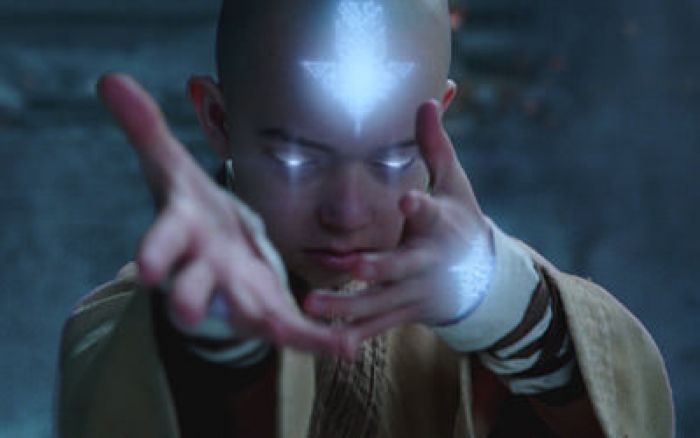
In 2007, Matthew Vaughn released a movie adaptation of Stardust, my favorite Neil Gaiman novel. The original novel is essentially a fairy tale: it’s not without its darker and more tragic aspects (which are often mentioned only in passing), but overall, it has a very light, even airy tone that is a joy to read.
Vaughn’s movie, on the other hand, opted for a grittier, more violent and “epic” tone that was completely at odds with the book, and as a result, absolutely butchered the story.
As I wrote in my review:
It’s a wonderful story — in the book, at least. And the filmmakers get it wrong on nearly every count. What bothers me is not the stuff that they’ve added — e.g., Captain Shakespeare, a cross-dressing sky pirate played by Robert De Niro — but rather, the stuff that they’ve removed. Specifically, every bit of wit, cleverness, subtlety, mystery, and sadness that exists in the novel, and all so that they can have a big, bad-ass, pyrotechnics-filled — and utterly generic — Hollywood fantasy film.
Stardust is not necessarily Gaiman’s best or most highly acclaimed work, but it’s my favorite: it’s the one that I enjoy the most, the one that I return to most frequently. It’s a simple and earnest story, and that’s precisely why it works so well. Sure, there are big fights, heartpounding chases, and whatnot, but much of that is conveyed only in passing; that’s not where the focus of the story lies. Which is something the filmmakers apparently missed entirely.
Every time I sat through another sweeping, epic vista, or watched another slow-motion chase with galloping horses and a pounding orchestral score — all of which seemed like little more than the filmmakers begging for Lord of the Rings comparisons — or whenever the movie tossed out a little joke or got tongue-in-cheek — Robert De Niro’s prancing, Michelle Pfeiffer’s vamped-up performance — my heart just sank at how far the filmmakers had missed the mark.
I want to give Shyamalan the benefit of the doubt — in part because I think he’s a talented filmmaker and I’d like to see him redeem his career — but at the same time, there’s nothing in the production that I’ve seen to date that indicates that I won’t have a reaction similar to the one I had to the Stardust movie.
Honestly, I’m much more interested in the three sixty minute animated Avatar movies that Nickelodeon announced awhile back. Admittedly, there hasn’t been any substantial news about these three movies since the initial announcement, but if they ever do get made, there’s plenty of material on which to draw for their storylines. For example:
- What if Aang isn’t really the last airbender? What if some Air Nomads survived the Fire Nation’s assault thanks to their, um, nomadic nature? Can Aang restore the Air Nomad nation?
- When the series ends, Zuko vows to restore the honor of the Fire Nation and use its resources and power to restore peace. However, the citizenry of the Fire Nation had undergone a century of virtual brainwashing, something that won’t just go away with a new ruler. Certainly there would be challenges to Zuko’s new plans. What are they? How will Zuko react? What sort of animosity and skepticism will he receive from the other nations, who will have to overcome a century of oppression and genocide?
- Does Zuko ever find his mother, who was banished from the Fire Nation when he was a boy? At the series’ conclusion, Zuko visits his imprisoned father and demands information about her whereabouts, but we never see what happens.
- One of the most interesting character histories is that of Iroh, Zuko’s uncle and advisory throughout the series. We hear stories of his past and background, but a more thorough exploration and telling of his story would make for an interesting prequel.
- It’d be interesting to do a sequel that’s set long after the series’ conclusion, perhaps even after all of the series’ characters have died, to show the impact that they’ve had on future generations. How has the Fire Nation’s attempts to restore the world gone? How has the world rebuilt itself after the long war? What is Aang, Zuko, et al’s true legacy?
The world of Avatar: The Last Airbender is vast and its mythology deep, with plenty of room for many more stories.
Conclusion
In the last few months, Avatar: The Last Airbender has quickly become one of the more enjoyable series that I’ve seen in a long time. And to add to all of the above, it gives me hope for children’s entertainment, that it is possible to produce entertainment for children that doesn’t demean them or talk down to them. Rather, that it’s possible to produce entertainment for them that meets them where they’re at and proceeds to tell them stories that appropriately engaging, enthralling, and thought-provoking.
I look forward to the day when I can sit down with my kids and watch and discuss Avatar with them — Simon has already expressed an interest in it, though I suspect that has more to do with the fact that it’s something on TV than anything else — not to mention the films of Miyazaki, and other worthy and valuable fragments of pop culture.